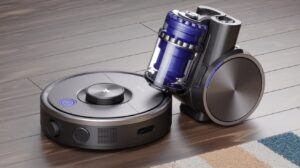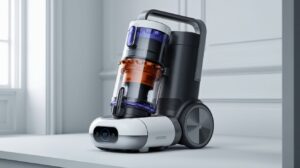Rechargeable vacuums have become a household favorite, offering an efficient, hassle-free cleaning solution for modern homes. The innovation of vacuum battery technology has played a significant role in this shift, enabling cordless vacuum cleaners to outperform traditional models. The ability to clean without the restriction of cords makes them ideal for fast-paced lifestyles.
In recent years, innovations in battery-powered vacuums have led to more powerful and longer-lasting devices, ensuring that these vacuums are up to the task, no matter the cleaning need. From lithium-ion battery vacuums to improved vacuum cleaner charging times, battery technology is at the core of these advancements.
As rechargeable vacuums continue to evolve, the role of battery innovations becomes even more vital in enhancing user experience and extending battery life. In this article, we’ll explore how battery technology is transforming rechargeable vacuums, making them more efficient, powerful, and sustainable for homeowners.

II. The Evolution of Rechargeable Vacuums
Rechargeable vacuums have come a long way since their inception. With advancements in vacuum battery technology, these devices have become far more efficient, powerful, and user-friendly. The shift from traditional corded vacuums to cordless vacuum cleaners is a prime example of how technology can revolutionize even the most mundane household tasks. Let’s explore how these changes unfolded, from the early models to today’s cutting-edge innovations.
History of Cordless Vacuum Cleaners and Their Development
In the early stages of rechargeable vacuums, battery technology was quite limited. Early models used bulky, inefficient nickel-cadmium (NiCad) batteries, which had relatively short run times and long charging periods. These early battery-powered vacuums lacked the power to tackle larger spaces, making them more suited for quick touch-ups or smaller living areas. They were also relatively heavy, which made them less convenient for many consumers.
However, as consumers began demanding better performance and longer battery life, manufacturers started to invest in improving the technology. One of the significant milestones in the evolution of rechargeable vacuums was the development of lithium-ion batteries. This shift marked a turning point, as lithium-ion technology offered longer-lasting, more efficient power. Unlike earlier models, vacuums powered by lithium-ion batteries could hold a charge for much longer, reducing the need for frequent recharging and allowing users to clean larger areas in one go.
Overview of Early Battery Technologies Used in Vacuums
Before the widespread adoption of lithium-ion battery vacuums, the most common power source for cordless vacuums was the nickel-cadmium (NiCad) battery. These batteries were relatively inexpensive and easy to manufacture but came with several drawbacks. The most significant downside was their limited runtime and relatively slow recharge time. Consumers were often frustrated with the lack of power, especially for larger cleaning jobs. Additionally, NiCad batteries suffered from the “memory effect,” meaning they would lose capacity over time if not fully discharged before recharging.
With the introduction of lithium-ion batteries, vacuum cleaners experienced a major upgrade. Lithium-ion batteries are lighter, more energy-dense, and can hold a charge for a much longer period. This allowed manufacturers to design cordless vacuum cleaners that could provide the suction power needed for thorough cleaning without the burden of a cord. As a result, rechargeable vacuums became more practical and versatile, making them an attractive option for busy households and tech-savvy consumers.
Transition to Modern Rechargeable Vacuum Models with Advanced Battery Technology
Today, vacuum battery technology has advanced significantly, leading to the development of vacuum cleaners that offer excellent performance, long battery life, and faster charging times. The latest cordless vacuum cleaner models are designed with high-capacity lithium-ion batteries that offer extended cleaning time and powerful suction. Manufacturers have also incorporated smart features that optimize battery usage, allowing the vacuum to automatically adjust suction power based on the type of surface being cleaned. This innovation improves vacuum cleaner power efficiency, making these devices more effective at picking up dirt, dust, and debris on various floor types.
Additionally, the charging speed has greatly improved. Today’s rechargeable vacuums can fully charge in less than four hours, compared to the much longer charging times of earlier models. Some of the more advanced battery-powered vacuums even feature fast-charging capabilities, so users can quickly recharge their vacuum in between cleaning sessions, ensuring minimal downtime.
As battery technology has evolved, sustainable vacuums have also emerged, with manufacturers prioritizing eco-friendly materials and recyclable battery components. This shift aligns with growing consumer demand for products that are not only efficient but also environmentally responsible. Consumers now have access to vacuums that are not only high-performing but also contribute to reducing electronic waste.
The next frontier in vacuum battery technology promises even more innovations. With emerging developments like solid-state batteries and improved battery management systems, rechargeable vacuums are set to become even more powerful and sustainable. These innovations are expected to make cordless vacuum cleaners more energy-efficient and longer-lasting, giving homeowners even more reason to embrace the convenience and effectiveness of rechargeable vacuums.
In conclusion, the evolution of rechargeable vacuums has been driven largely by innovations in battery technology. From the early days of nickel-cadmium batteries to the modern, high-capacity lithium-ion batteries powering today’s cordless vacuum cleaners, these advancements have allowed vacuums to become more powerful, efficient, and user-friendly. As we look toward the future, consumers can expect even more exciting developments in vacuum cleaner battery innovations, making it easier than ever to keep homes clean with minimal effort.
III. Key Innovations in Battery Technology for Vacuums
The rapid evolution of battery-powered vacuums can be attributed to key innovations in vacuum battery technology. These innovations have not only improved performance but have also made rechargeable vacuums more efficient, portable, and environmentally friendly. Let’s explore the most significant breakthroughs that have transformed the industry.
Lithium-Ion Batteries
One of the most pivotal changes in the development of cordless vacuum cleaners is the widespread adoption of lithium-ion batteries. Unlike older technologies, such as nickel-cadmium (NiCad), lithium-ion batteries offer several benefits that have reshaped the rechargeable vacuum market.
First, lithium-ion battery vacuums provide significantly longer runtime compared to their predecessors. This allows users to clean more area without needing a recharge, making them ideal for larger homes or multi-room cleaning. These batteries are also more compact, which has helped make vacuums lighter and easier to handle. Additionally, they charge faster and can be recharged numerous times without significant loss of capacity, unlike older battery technologies that suffered from the “memory effect.”
The shift to lithium-ion has made battery-powered vacuums more powerful, offering suction capabilities that are comparable to traditional corded models. These improvements in vacuum cleaner power efficiency have made rechargeable vacuums a go-to option for people looking for both performance and convenience in their cleaning routine.
Battery Capacity and Power
Another important innovation in vacuum battery technology is the increase in battery capacity. Higher capacity batteries allow rechargeable vacuums to run longer and maintain a higher level of suction power throughout their cycle. Modern cordless vacuum cleaners are designed to provide powerful suction while consuming less battery, ensuring that cleaning tasks are completed more efficiently.
By increasing the battery capacity, manufacturers have been able to create battery-powered vacuums that perform exceptionally well on a wide variety of surfaces, from carpets to hardwood floors. These vacuums now offer consistent, high-powered suction throughout their runtime, ensuring thorough cleaning without sacrificing performance. The integration of advanced battery management systems in modern vacuums also optimizes power consumption, ensuring that the battery lasts longer while maintaining high efficiency.
For users who need high-powered suction for large homes or specific cleaning tasks (like pet hair), these improvements in battery capacity and vacuum cleaner power efficiency are game changers. Consumers no longer have to compromise between power and runtime, as modern rechargeable vacuums offer both.
Charging Speed & Time
As battery technology has progressed, so too has the charging speed. Earlier battery-powered vacuums had long charging times that could disrupt users’ cleaning routines. However, recent innovations in vacuum cleaner charging time have made these vacuums far more convenient.
Many of today’s rechargeable vacuums can be fully charged in under four hours, with some models offering fast-charging capabilities that take even less time. This means that users can quickly recharge their vacuums and resume cleaning with minimal downtime. Some high-end models feature intelligent charging systems that monitor the battery’s health and adjust charging patterns to extend its life, further improving the longevity and efficiency of the vacuum.
Faster charging times have made cordless vacuum cleaners much more practical for busy households. Users can clean their homes in shorter bursts and easily recharge in between, making it easier to complete their cleaning tasks without waiting around for hours for the vacuum to charge. With innovations in charging technology, rechargeable vacuums are now faster and more efficient than ever before.
Sustainability in Vacuum Batteries
As consumers become more environmentally conscious, vacuum battery technology has also evolved to meet the demand for more sustainable and eco-friendly options. Modern rechargeable vacuums are increasingly being designed with recyclable and sustainable materials. For example, manufacturers are using environmentally friendly components in lithium-ion batteries and focusing on reducing waste in the production process.
The focus on sustainability extends to the overall life cycle of battery-powered vacuums. Many manufacturers offer programs that allow customers to recycle their old batteries, reducing the environmental impact of these devices. Additionally, some models feature longer-lasting batteries that reduce the frequency of replacements, helping to minimize electronic waste.
Eco-conscious consumers are particularly drawn to these sustainable vacuums because they combine efficiency with environmental responsibility. The shift toward more sustainable practices in the manufacturing of rechargeable vacuums demonstrates the growing recognition of the need for greener alternatives in consumer electronics.
IV. How Battery Technology Impacts Vacuum Performance
Battery technology plays a pivotal role in the performance of rechargeable vacuums. Advances in vacuum battery technology have led to significant improvements in suction power, runtime, and overall efficiency. Let’s take a closer look at how these innovations directly impact the performance of battery-powered vacuums.
Suction Power and Efficiency
The heart of any vacuum cleaner is its suction power, and battery technology has had a major influence on improving this crucial aspect. Lithium-ion batteries, the cornerstone of modern cordless vacuum cleaners, offer high energy density, meaning they can store more power in a smaller, lighter package. This results in rechargeable vacuums that maintain strong suction power throughout their runtime, even on demanding surfaces like carpets.
With lithium-ion battery vacuums, users can experience powerful suction that rivals traditional corded vacuums. The vacuum cleaner power efficiency has improved dramatically, thanks to better battery management systems that optimize the power flow to the motor. This means the vacuum can use its power more efficiently, ensuring consistent suction without draining the battery too quickly.
Older battery-powered vacuums often struggled with maintaining suction power as the battery drained. However, modern rechargeable vacuums equipped with lithium-ion technology are designed to provide steady and powerful suction from start to finish. Whether cleaning pet hair, dust, or dirt from various floor types, the vacuum’s performance is reliable, making it an excellent choice for homes with multiple floor types.
Run Time & Runtime Management
One of the most significant benefits of advancements in battery technology is the improvement in run time. Earlier battery-powered vacuums were often limited by short battery life, requiring users to pause and recharge frequently. However, thanks to innovations in battery capacity, modern rechargeable vacuums are capable of running for much longer periods.
The increased battery capacity in cordless vacuum cleaners allows users to clean larger areas without the need to recharge midway. This is especially helpful for those with larger homes or multi-floor cleaning needs. Additionally, vacuum battery technology has evolved to include smart features like runtime management systems that adjust power usage based on the surface being cleaned. For example, the vacuum may use more power when cleaning thick carpet and less power on hardwood floors, optimizing both battery life and cleaning performance.
This intelligent power management ensures that the vacuum performs at its best throughout its run time, while also preserving battery life. As a result, rechargeable vacuums can tackle more extensive cleaning tasks, with longer operating times and greater convenience for users who need to get the job done in one go. The days of needing multiple recharges during a cleaning session are behind us.
Weight and Portability
Another crucial impact of battery technology on vacuum performance is the reduction in weight and improved portability.
With the introduction of lithium-ion batteries, cordless vacuum cleaners have become significantly lighter and easier to handle. These modern rechargeable vacuums offer the same powerful performance as their corded counterparts but without the bulk.
Furthermore, the lightweight nature of battery-powered vacuums makes them ideal for quick spot cleaning. They can be grabbed and used without the hassle of plugging and unplugging, making them convenient for busy households. Whether you need to clean a quick mess in the kitchen or tackle a larger cleaning job, the portability of rechargeable vacuums ensures that users can complete the task with minimal effort.

V. Comparative Analysis: Lithium-Ion vs. Other Battery Types
The choice of battery type has a significant impact on the performance, efficiency, and convenience of rechargeable vacuums. Among the various options, lithium-ion batteries have emerged as the dominant technology in modern battery-powered vacuums. However, earlier models relied on alternatives like nickel-cadmium (NiCad) and nickel-metal hydride (NiMH) batteries. In this comparative analysis, we’ll explore how lithium-ion battery vacuums stack up against these older technologies.
Lithium-Ion Batteries: Superior Performance and Efficiency
Lithium-ion batteries have transformed the landscape of cordless vacuum cleaners due to their superior energy density, lightweight design, and reliability. These batteries are smaller and lighter than their predecessors, making rechargeable vacuums more portable and easier to maneuver. Their high energy density allows for longer run times without adding unnecessary bulk to the vacuum.
Another significant advantage of lithium-ion battery vacuums is their ability to deliver consistent suction power throughout the cleaning session.
Lithium-ion battery vacuums also excel in longevity. These batteries can undergo hundreds of charge cycles without significant degradation, making them more durable and cost-effective in the long run. This feature is especially important for consumers looking for sustainable vacuums that reduce waste and require fewer battery replacements over time.
Nickel-Cadmium (NiCad) and Nickel-Metal Hydride (NiMH) Batteries: Limitations and Challenges
Before the widespread adoption of lithium-ion batteries, NiCad and NiMH batteries were commonly used in battery-powered vacuums. While these technologies played a pivotal role in the early days of cordless vacuum cleaners, they had several limitations that made them less ideal for modern applications.
NiCad batteries, for instance, were heavy and bulky, which made vacuums harder to handle and less portable. These batteries also suffered from the “memory effect,” meaning their capacity decreased over time if not fully discharged before recharging. This significantly reduced the efficiency and reliability of NiCad-powered vacuums, leading to shorter run times and reduced suction power.
NiMH batteries, introduced as a successor to NiCad, addressed some of these issues. They offered higher energy density and were less prone to the memory effect. However, NiMH batteries still fell short of the performance offered by lithium-ion technology. They were heavier and took longer to charge, which made them less convenient for users. Additionally, both NiCad and NiMH batteries experienced more rapid self-discharge compared to lithium-ion batteries, meaning they lost power even when not in use.
In terms of sustainability, NiCad batteries contained toxic materials, making them less environmentally friendly. Proper disposal was critical to prevent environmental harm, but many consumers were unaware of these requirements, leading to improper disposal practices. NiMH batteries, while more environmentally friendly than NiCad, were still less efficient and longer-lasting than lithium-ion alternatives, limiting their appeal for modern rechargeable vacuums.
VI. The Future of Rechargeable Vacuums and Battery Technology
As technology evolves, the future of rechargeable vacuums looks increasingly promising, driven by ongoing advancements in vacuum battery technology. From next-generation energy storage solutions to more sustainable practices, the landscape of battery-powered vacuums is set to change dramatically. Here’s a glimpse of what lies ahead.
Next-Generation Batteries: Beyond Lithium-Ion
While lithium-ion batteries dominate the current market, researchers and manufacturers are already exploring alternatives that could outperform this technology. Emerging battery types, such as solid-state batteries, hold immense potential to revolutionize rechargeable vacuums.
Solid-state batteries promise higher energy density, longer run times, and improved safety compared to lithium-ion technology. These batteries replace the liquid electrolyte found in lithium-ion cells with a solid electrolyte, reducing the risk of overheating and improving overall durability. For battery-powered vacuums, this translates into even longer-lasting, more efficient devices that can handle extensive cleaning tasks without interruption.
Another exciting development is the use of graphene batteries, which are touted as the future of vacuum battery technology. Graphene’s superior conductivity and lightweight nature could lead to ultra-fast charging, significantly reducing the vacuum cleaner charging time. These advancements would make rechargeable vacuums more practical for busy households, ensuring they’re always ready to tackle messes at a moment’s notice.
Smarter Battery Management Systems
The integration of smart technology into battery-powered vacuums is another key trend shaping the future. Modern battery management systems (BMS) are designed to optimize power usage, improve vacuum cleaner power efficiency, and extend the lifespan of the battery. As technology continues to advance, these systems will become even more sophisticated.
Future BMS advancements could include real-time monitoring of battery health, charge cycles, and energy usage, providing users with insights to maximize their vacuum’s performance. Additionally, some manufacturers are exploring the use of artificial intelligence (AI) to create self-learning vacuums that can adjust their power settings based on the type of cleaning task, further enhancing both efficiency and battery life.
For example, a smart rechargeable vacuum equipped with AI could detect different floor types and automatically adjust suction power, conserving battery for areas that require less energy. This not only optimizes run time but also ensures thorough cleaning without unnecessary power consumption. These intelligent features align with the growing demand for more efficient, eco-friendly appliances.
Sustainability and Eco-Friendly Batteries
As consumers become more environmentally conscious, the focus on sustainability in vacuum battery technology is increasing. Manufacturers are working to develop greener alternatives that reduce the environmental impact of rechargeable vacuums.
One significant initiative is the creation of sustainable vacuums with recyclable or biodegradable battery components.
Another area of focus is reducing the carbon footprint associated with battery production. By adopting cleaner manufacturing processes and sourcing materials responsibly, manufacturers are contributing to a more sustainable future.
VII. Choosing the Best Rechargeable Vacuum for Your Home
Finding the perfect rechargeable vacuum for your home requires understanding your cleaning needs, lifestyle, and the technology available. Modern battery-powered vacuums come in a variety of styles, offering unique features that cater to specific preferences. This section explores how to assess your needs and choose the best vacuum for your home.
Assessing Your Cleaning Needs
The first step in selecting a cordless vacuum cleaner is evaluating your cleaning requirements. Consider factors such as the size of your home, the types of flooring you have, and whether you need a vacuum that can handle pet hair or allergens. These factors play a significant role in determining the type of rechargeable vacuum best suited to your household.
For larger homes, lithium-ion battery vacuums with extended run times are ideal. These vacuums offer the power and durability needed to clean large spaces without frequent recharges. If you have carpets, a vacuum with high suction power and a motorized brush head is essential for deep cleaning. Hardwood floors, on the other hand, may require a vacuum with adjustable suction settings to prevent damage while effectively removing dust and debris.
Pet owners might prioritize a battery-powered vacuum equipped with specialized tools for removing pet hair and dander. Some models also feature HEPA filters, which are excellent for improving indoor air quality by trapping allergens and fine particles.
Evaluating Battery Performance
Battery performance is a critical factor when choosing a rechargeable vacuum. Modern vacuum battery technology ensures powerful and consistent cleaning, but it’s essential to understand the specifications of the model you’re considering. Key features to examine include battery capacity, run time, and charging speed.
Lithium-ion batteries are the gold standard in cordless vacuum cleaners, offering superior energy density and faster charging times.
Charging speed is another important consideration, especially for busy households. Some rechargeable vacuums feature rapid charging, enabling the battery to reach full capacity in just a few hours. This ensures your vacuum is always ready for use when you need it.
Comparing Features and Accessories
Modern rechargeable vacuums come with a wide range of features and accessories, making them versatile cleaning tools. Comparing these options can help you choose a vacuum that meets your specific needs and preferences.
For instance, many cordless vacuums offer adjustable suction settings, allowing you to clean different surfaces with ease. Some models are designed for multitasking, with attachments such as crevice tools, dusting brushes, and upholstery nozzles included. These accessories are particularly useful for reaching tight spaces, cleaning furniture, or removing dust from curtains and blinds.
Another feature to consider is the vacuum’s weight and design. Lightweight battery-powered vacuums are easier to maneuver and carry, especially for multi-floor cleaning. Stick vacuums, for example, are popular for their slim profiles and portability, making them ideal for quick cleanups and smaller living spaces.
Smart features, such as app connectivity and automatic floor detection, are becoming increasingly common in rechargeable vacuums. These innovations enhance the user experience by providing real-time updates on battery status, cleaning progress, and maintenance reminders.






